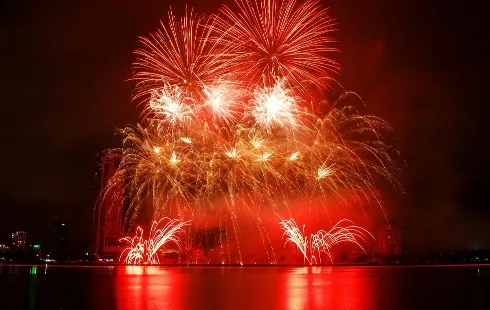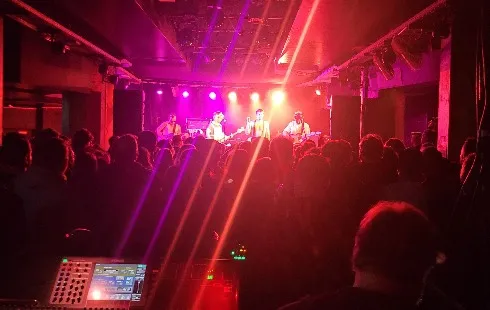
Pantone's Color of the Year an Endless Neutral Loop
Section: Fashion
Would I find La Maga? wondered Oliveira while walking the streets of the Quartier Latin in Paris, coming down the rue de Seine to the Pont des Arts. So begins the magical journey between Buenos Aires and Paris.
Hopscotch (Rayuela) is an introspective stream-of-consciousness novel, where its characters fluctuate and play with the subjective mind of the reader, and it has multiple endings. Literary critics and the author himself often referred to Hopscotch as an open-ended anti-novel, in which the reader is invited to rearrange the story line and sequence of events. It was intended to be a novel that would revolutionise the literary world, and that was what it did. Among other things it opened the door to the innovation of the Spanish language and deeply influenced other Latin American writers.
Julio Cortazar was born on 26th August, 1914, in Brussels, of Argentine parents traveling abroad on business. At the age of 4, his family returned to Buenos Aires, where he grew up in an upper-middle class suburb, located in the southern side of the city. Several of his stories like Los Venenos (The Poisons) and Deshoras (Afterhours) were based on the experiences of that time. He attended the Escuela Normal de Profesores Mariano Acosta, a teacher's college, and in 1953 he received a degree as a secondary school teacher. He worked in several towns in Argentina, and from those years experiences he wrote "La escuela de noche" (Night shift school). In 1951 he settled down in Paris, the city where he spent the rest of his life and where he earned a living as a writer and as a freelance translator for UNESCO. He also translated literary classics such as Robinson Crusoe and the stories of Edgar Allan Poe, into Spanish.
This year marks the 50th anniversary of the publication of his novel Hopscotch, that was first published on 28th June, 1963 by the publisher Sudamericana.
Cortazar managed to write a novel which marks a before and after in the history of literature. The curious aspect of his work is that it can be read in the traditional way starting with chapter 1 up to chapter 56 or alternating the 155 chapters, according to a set of instructions provided by the writer which bring us to and from Paris and Buenos Aires, playing as if we were jumping the squares in a hopscotch till we reached Heaven.
There will be celebrations all over the world to commemorate the anniversary.
On Argentina, state television established 2014 as the Cortazar year. The cycle will begin with the presentation "Rayuela, 50 years" where first editions, sketches, and drawings of the novel will be exposed. On the other hand, the Julio Cortazar library has a series of activities called "Rayuela world". This consist of the exchange of books, selected readings from the novel and live jazz auditions among others. Cortazar, a jazz lover, was a trumpet player himself, and he once admitted he "played the trumpet as a relief".
The Spanish publisher Alfaguara will release a special edition, which will contain a glossary where Cortazar himself tells the history of the novel and also includes a map of Rayuela's Paris events. A Paris full of walking through streets and bridges in the Quartier Latin, eccentric personalities of the "Serpent Club", musicians lost in rainy nights, a Paris full of conflicting love stories, coffees in the early dawn, jazz nights and conversations till the sun came up.
On a bookshop in Mexico, 55 hopscotch's produced by 55 artists and 11 texts inspired by his work will be shown.
At Paris, the Cervantes Institute organized the virtual road "Rayuela" (www.paris.rutascervantes.es/ruta/rayuela) which goes over important sites in the book, starting off with the jetty where the story between Oliveira and La Maga began looking for themselves in the Paris streets, to the Montparnasse cemetery where Cortazar's remains lie. The Institute inaugurated an artistic display, which shows the connection between the author and the city.
Hopscotch has been translated into thirty languages. Originally it was going to be called Mandala, but at the last moment the author changed it because he thought it was pedantic. It has been included by the Spanish newspaper "El Mundo" among the hundred best novels in the Spanish language of the 20th century.
It is considered a central piece of work of the Latinoamerican Boom, an editorial and literary phenomenon which emerged between 1960 and 1970, when the work of a group of Latin American novelists became well known in the world, thanks to the activity of the Catalonian literary agent Carmen Balcells. The most representative authors of the Boom were Julio Cortazar, Gabriel Garcia Marquez, Vargas Llosa and Carlos Fuentes.
Hand in hand with Horacio Oliveira (Buenos Aires middle class, cynic, indifferent, concentrated in his guest for heaven) and La Maga (an Uruguayan young girl, confused, insecure, distracted and dreamy), Hopscotch describes their turbulent love affair.
Cortazar makes us travel between Paris and Buenos Aires, through an uncertain Paris with no limits, intense nights, cigarettes, alcohol and jazz. Also through a Buenos Aires stained with nostalgic memories.
Hopscotch is a novel chosen by those who can see into the distance and who dare to dream.

Section: Fashion

Section: News

Section: Fashion

Section: Arts

Section: Politics

Section: Health Insurance

Section: News

Section: News

Section: News

Section: Arts
Both private Health Insurance in Germany and public insurance, is often complicated to navigate, not to mention expensive. As an expat, you are required to navigate this landscape within weeks of arriving, so check our FAQ on PKV. For our guide on resources and access to agents who can give you a competitive quote, try our PKV Cost comparison tool.
Germany is famous for its medical expertise and extensive number of hospitals and clinics. See this comprehensive directory of hospitals and clinics across the country, complete with links to their websites, addresses, contact info, and specializations/services.
Join us for an enchanting Christmas adventure at the Münchner Marionettentheater! Experience the marionette play 'Der verschwundene Wunschzettel' by Siegfried Böhmke, featuring our beloved Kasperl Larifari and his little friend Stupsi. As Christmas approaches, both Kasperl and Stupsi have prepared...



No comments yet. Be the first to comment!